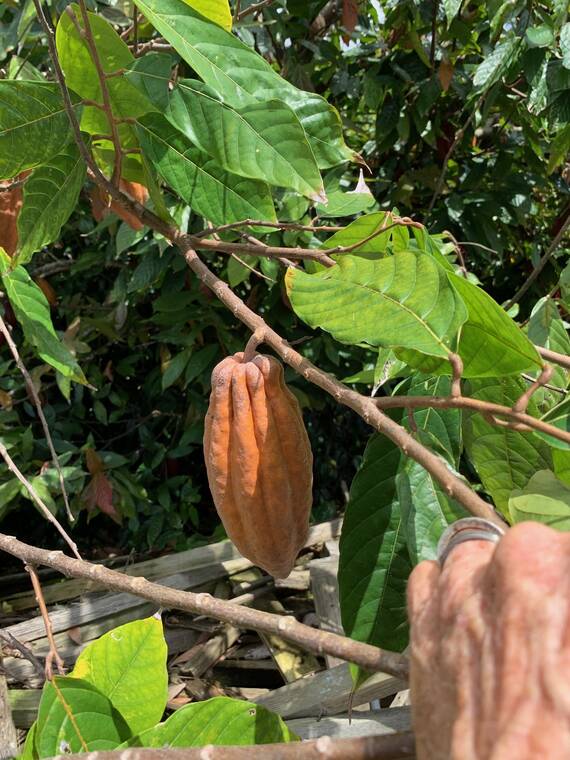“How long will it last?” is one of the most challenging questions asked about a volcanic eruption, including Kilauea volcano’s current lower East Rift Zone eruption.
The short answer is that no one knows for sure.
We can, however, offer the most likely possibilities based on characteristics of the current eruption and comparisons with past eruptions.
The LERZ eruption started May 3. During the next few weeks, a total of 24 vents briefly erupted, but only the eighth fissure, which initially opened May 5 and reactivated May 27, is still erupting today. On June 4, the fissure 8 lava flow reached Kapoho Bay, where a lava delta continues to grow as lava enters the ocean.
Knowing how much lava is erupting could help answer the duration question, but it’s been difficult to measure the fissure 8 eruption rate.
U.S. Geological Survey scientists have used several techniques in recent weeks to obtain a rough estimate of 50 to 150 cubic meters per second (65 to 196 cubic yards per second), for a total erupted volume to date of 0.5 cubic kilometers (0.12 cubic miles).
A decreasing trend in this rate would suggest the eruption might be ending — or be finished when the eruption rate gets too low to sustain ongoing activity. Unfortunately, we’ve not detected any trends. The eruption rate seems more or less constant with some short-term variations.
Preceding the LERZ eruption, geophysical monitoring of earthquakes and ground deformation tracked the subsurface intrusion of magma under Leilani Estates. If we could detect decreases in the volume of that intrusion as fissure 8 lava continues to erupt from it, we could estimate the length of time after which the intrusion would be depleted.
But monitoring has detected no changes in the intrusion since its emplacement. This suggests magma withdrawn by the fissure 8 eruption is being quickly replaced.
We also turn to past eruptions for clues to possible duration.
In the recent USGS hazard assessment of fissure 8 (https://volcanoes.usgs.gov/vsc/file_mngr/file-185/USGS%20Preliminary%20Analysis_LERZ_7-15-18_v1.1.pdf), Kilauea’s 2018 eruption was compared with four past LERZ events.
The 1840 eruption, which lasted 26 days, had an average eruption rate similar to today’s rate. In 1924, earthquakes and major subsidence in the Kapoho area suggested magma intruded the LERZ, but no eruption occurred.
A LERZ eruption in 1955 shared some similarities with the first three weeks of the current eruption. During the 88-day-long 1955 event, more than 20 fissures erupted in no clear order; in May this year, 24 fissures erupted, also in no clear order. However, the average 1955 eruption rate was significantly lower than the present rate.
The most recent LERZ eruption occurred in 1960 in Kapoho. It lasted about five weeks, and its eruption rate was less than half that of today’s eruption.
As of July 31, the 2018 eruption has surpassed the 1955 eruption in duration and exceeded all but the 1840 event in eruption rate.
So, we look to other Kilauea eruptions for clues to how long the 2018 eruption could last.
Kilauea’s lower East Rift Zone has erupted more than 100 times in the past 2,500 years. We cannot determine the durations or eruption rates for those past events. Thus, we must use a proxy for those quantities, such as area covered by lava and total volume erupted — if we can get good estimates.
Heiheiahulu, a shield-shaped vent similar to Kupaianaha (active 1986-92), might have erupted in the early 18th century. It is located about 10 km (6 miles) uprift of fissure 8, and its lavas cover about 45 square kilometers (17 square miles). The similarity of its structure to that of Kupaianaha and Mauna Ulu suggest Heiheiahulu erupted for several years.
Lava from Pu‘u Kaliu, located 1.6 km (1 mile) uprift from fissure 8, covered about 12 square kilometers (4.6 square miles) with an estimated volume of 0.2 cubic kilometers (0.05 cubic miles). Pu‘u Kaliu lava flows, thought to have erupted in 1790 from fissures on either edge of the LERZ, are similar to the 1840 flow.
Finally, we must consider Pu‘u ‘O‘o, which lasted 35 years (1983-2018), erupting a volume of 3.3 cubic kilometers (0.79 cubic miles), and Mauna Ulu, which erupted 0.2 cubic kilometers (0.05 cubic miles) of lava throughout five years (1969-74).
So, how long will the 2018 LERZ eruption last?
Based on past eruptions and current geophysical monitoring, it could continue for many months to a few years. Time will tell.
Volcano activity updates
On Kilauea volcano’s lower East Rift Zone, lava continued to erupt primarily from fissure 8, feeding a channelized flow to the main ocean entry near Ahalanui Park. At the coast, as of Aug. 2, the flow remained less than 0.1 mile from the Pohoiki boat ramp at Isaac Hale Beach Park. Sulfur dioxide emissions from the active fissure remain high. Residents in the lower Puna District should stay informed and heed county Civil Defense closures, warnings and messages (http://www.hawaiicounty.gov/active-alerts).
At Kilauea’s summit, collapse events continued to occur during the past week, releasing energy equivalent to earthquakes of about magnitude-5.3. Ongoing subsidence of Halema‘uma‘u and adjacent parts of the caldera floor resulted in frequent felt earthquakes at the summit. Three or more felt reports were submitted for 51 of the earthquakes that occurred in Hawaii during the past week.
At Mauna Loa, HVO seismic and deformation monitoring networks indicate the volcano is no longer at an elevated level of activity. Accordingly, HVO dropped the Mauna Loa alert level to Normal and the aviation color code to Green on June 21. HVO continues to monitor the volcano closely and will report any significant changes.
Visit HVO’s website (https://volcanoes.usgs.gov/hvo) for past Volcano Watch articles, Kilauea daily eruption updates, Mauna Loa weekly updates, volcano photos, maps, recent earthquake info, and more. Call for summary updates at 808-967-8862 (Kilauea) or 808-967-8866 (Mauna Loa). Email questions to askHVO@usgs.gov.
Volcano Watch (https://volcanoes.usgs.gov/hvo/hvo_volcano_watch.html) is a weekly article and activity update written by U.S. Geological Survey Hawaiian Volcano Observatory scientists and affiliates.






